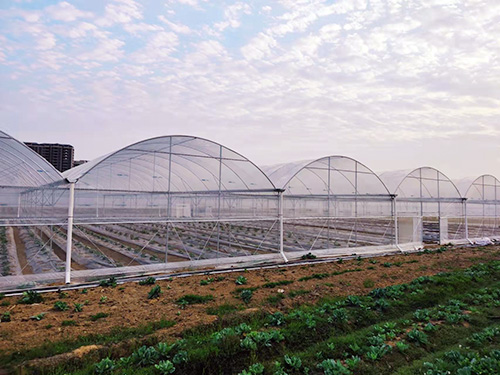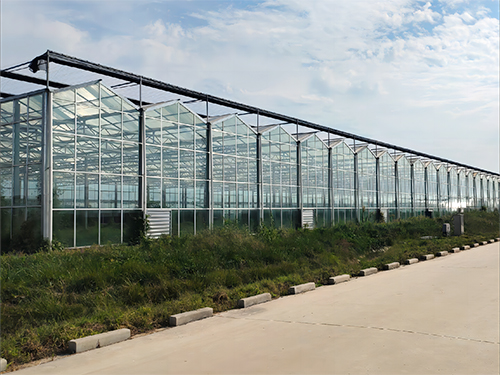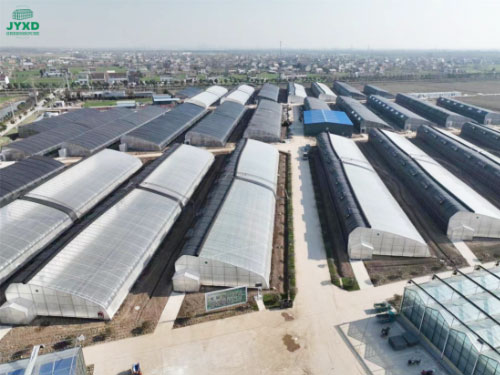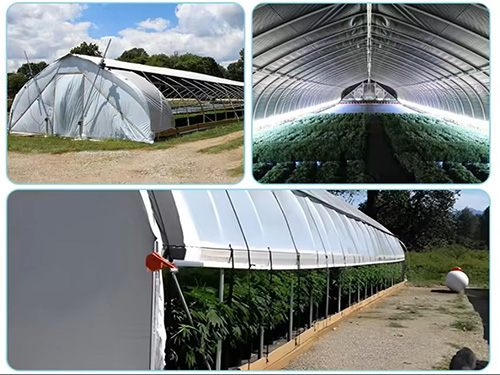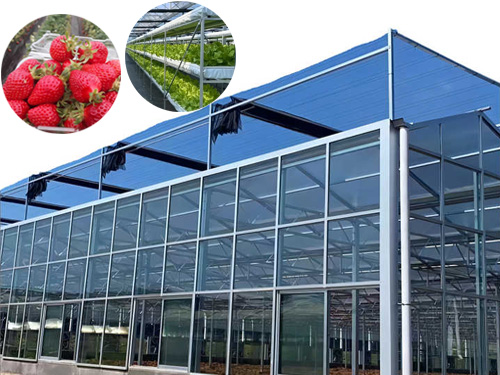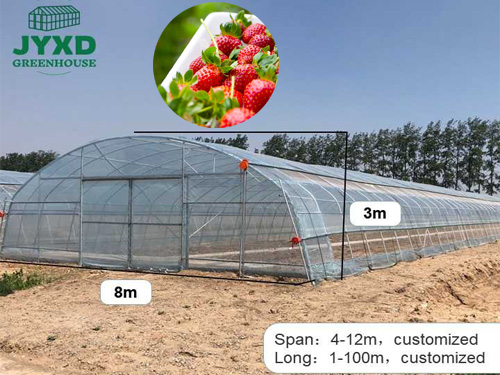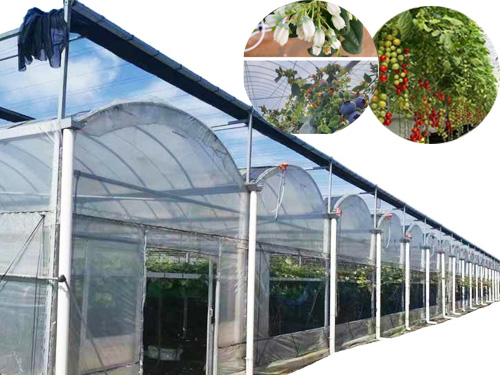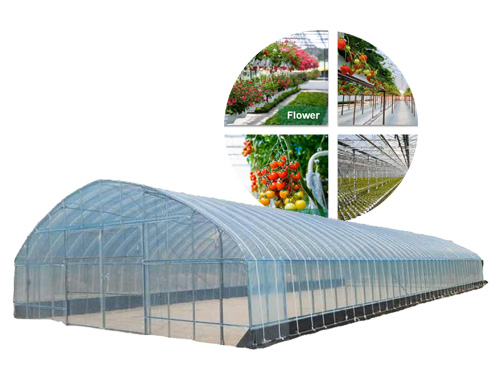NEWS DETAILS
NEWS INFORMATION
Optimizing Greenhouse Plant Growth with LED Lighting
AUTHOR:jyxd-greenhouse DATE:2024-11-20 18:13:23 HITS:83
In greenhouse cultivation, light is one of the key factors that determine plant health and yield. With advancements in technology, more greenhouses are starting to use LED lighting to supplement natural light. This efficient lighting method not only meets plants' light requirements but also saves energy. This article explores the advantages of greenhouse LED lighting, selection guidelines, and how to optimize plant growth with LED lights, providing growers with the best strategies for using LED lighting.
1. Advantages of Greenhouse LED Lighting
Compared to traditional incandescent or fluorescent lights, LED lighting has many unique advantages in a greenhouse environment:
Energy Efficiency: LED lights have high energy conversion efficiency, converting more electrical energy into usable light for plants, reducing energy consumption.
Adjustable Spectrum: LED lights can emit different spectra such as red and blue light, each of which has a distinct role in plant growth. For instance, red light promotes flowering and fruiting, while blue light stimulates leaf growth.
Long Lifespan: LED lights have a long lifespan, often exceeding 50,000 hours, reducing the frequency of replacements and maintenance costs.
Low Heat Emission: LED lights emit less heat, preventing the greenhouse temperature from rising excessively, making it easier to control the environment and avoid heat damage to plants.
Keywords: greenhouse LED lighting
2. The Role of LED Lighting in Plant Growth
LED lighting helps plants perform photosynthesis more effectively by providing specific wavelengths of light required for growth. Different wavelengths of LED light play unique roles in plant growth:
Blue Light (450-495nm): Blue light promotes leaf growth and helps form thick leaves. It is essential for plant photosynthesis, especially important for leafy vegetables and greens.
Red Light (620-730nm): Red light primarily affects flowering and fruiting, helping to increase fruit yield. A red-blue light combination can optimize overall plant growth.
Far-Red Light: Far-red light helps elongate stems and promotes flowering. It is ideal for use during specific stages of fruit and vegetable plant growth.
By using a combination of different LED light spectra, greenhouse growers can provide the best lighting conditions for plants, thus improving both yield and quality.
Keywords: LED spectrum, red light, blue light
3. LED Lighting Selection Guidelines for Greenhouses
When selecting LED lighting for greenhouses, the following aspects are particularly important:
Spectrum Type: Choose the appropriate spectrum combination based on the plant species. For example, leafy vegetables may benefit from LED lights with a higher proportion of blue light, while fruits and vegetables thrive with a red-blue light combination.
Power: Select the appropriate LED power based on greenhouse size and plant type, avoiding insufficient or excessive power that could lead to uneven lighting or energy waste.
Lighting Range: Ensure that the chosen LED lights cover the entire greenhouse growing area, especially in large greenhouses, where multiple LED lights may be needed.
Adjustability: Some LED lights allow for brightness and spectrum adjustments, making them ideal for greenhouse cultivation as they can be tailored to the changing light needs of plants throughout their growth stages.
4. How to Optimize Greenhouse Plant Growth with LED Lighting
To achieve the best results with LED lighting in a greenhouse, here are some effective strategies:
a) Adjust Lighting Duration
The on/off times of LED lights should be set according to the plants' light requirements. For plants with long light durations, provide around 16 hours of light per day, while plants with lower light requirements can have shorter durations. Additionally, using an automatic timer can help control LED light switches, ensuring precise, around-the-clock lighting management.
b) Dynamic Spectrum Adjustment
Plants have different light spectrum needs at various growth stages. For example, blue light is more important for seedlings to develop leaves, while red light can be increased during flowering and fruiting to promote better results. Choosing LED lights with adjustable spectra allows growers to dynamically adjust the lighting to meet plants' changing needs.
c) Control Light Intensity Appropriately
Different plants have different light tolerance levels. Excessively high light intensity may cause leaf burn, while too little light can suppress growth. Using dimmable LED lights allows growers to adjust light intensity based on plant needs, ensuring an optimal lighting environment.
5. Case Studies of LED Lighting in Greenhouse Cultivation
LED lighting has been widely applied in the cultivation of various crops in greenhouses, including:
Fruit and Vegetable Cultivation: In crops such as tomatoes and strawberries, red-blue light combination LEDs can significantly improve fruit yield and quality.
Flower Cultivation: For flowers that require specific blooming cycles, LED lighting can adjust spectra and light duration to promote blooming and lush flowers.
Leafy Vegetables: For crops like lettuce and spinach, LED lights with higher blue light ratios promote leaf growth, making the leaves thicker and fresher.
These successful cases show that LED lighting in greenhouse cultivation not only boosts yield but also improves crop quality.
Keywords: greenhouse cultivation cases, fruit and vegetable farming, leafy vegetables
6. Future Trends in Greenhouse LED Lighting
With the continuous advancement of LED technology, future greenhouse LED lighting will become more intelligent and efficient. The integration of the Internet of Things (IoT) and artificial intelligence will allow LED lighting to adapt to environmental changes, enabling precise light control. Additionally, the emergence of energy-saving LED lights will further reduce energy consumption, providing more cost-effective solutions for greenhouse cultivation.
Conclusion
Greenhouse LED lighting provides a highly efficient, flexible, and energy-saving lighting solution for modern greenhouse agriculture. By selecting the right type of LED light, setting appropriate lighting durations, and adjusting light spectra, greenhouse growers can optimize photosynthesis and enhance crop yields and quality. Whether for fruit and vegetable farming, flower cultivation, or leafy vegetable production, the widespread application of LED lighting in greenhouses will drive the development of greenhouse agriculture, achieving high yields, energy savings, and sustainable growing practices.
Hebei Juyou Xinda Greenhouse Facilities Co.,Ltd.
Copyright © 2024-2025 https://www.jyxd-greenhouse.com. All Rights Reserved Hebei Juyou Xinda Greenhouse Facilities Co.,Ltd.Copyright





 Current Location:
Current Location: